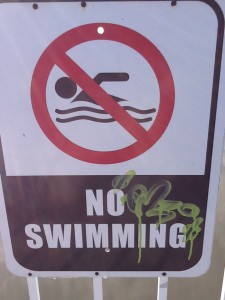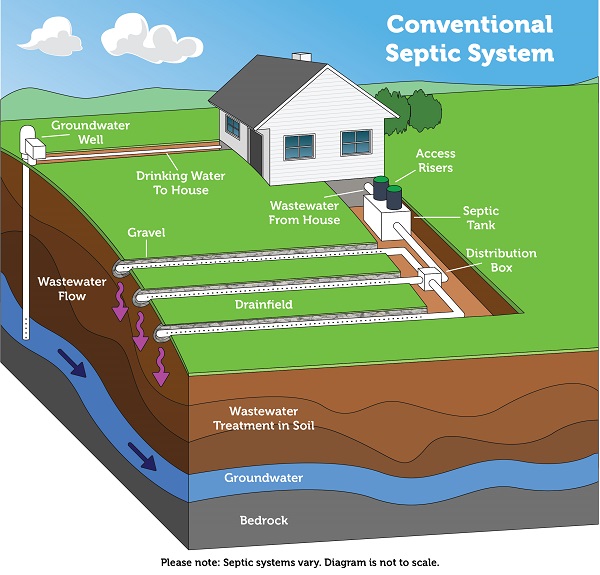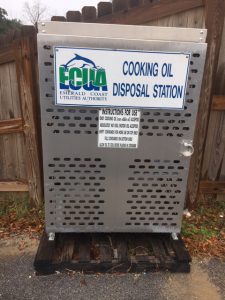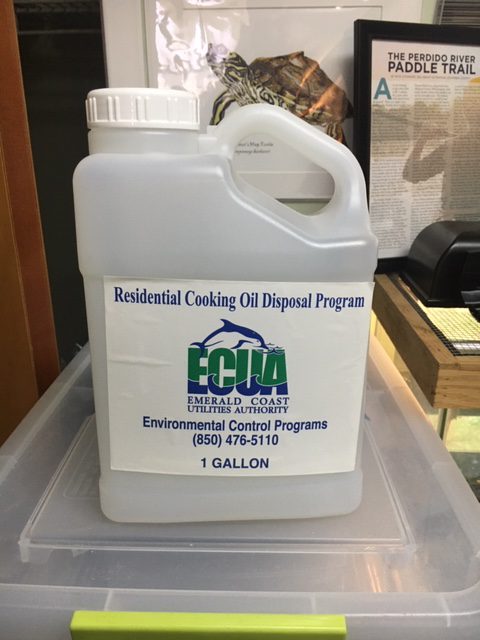Health advisories are issued by state and local health departments when levels of fecal bacteria become too high for the public to safely enter the water. Sewage can be a source of these fecal bacteria. They can harbor pathogenic organisms that can cause of a variety of health problems. State and local health departments routinely monitor local waterways, particularly where people recreate, to assure the level of fecal bacteria is not unsafe. It is understood that the presence of fecal bacteria in waterways is normal, animals do go the bathroom, but excessive levels can be unsafe.

In the Pensacola Bay area, most of the human recreation areas near the barrier islands rarely have health advisories issued. Once every few years there is an issue at the sewage treatment facility on Pensacola Beach and an advisory is issued, or a sewage line is broken either near Santa Rosa Sound or Big Lagoon with the same results. But is very rare.
However, our local bayous are different. The neighborhoods are densely populated with old or outdated infrastructure, and how we manage these systems can cause problems as well. We are going to do a three-part series on what property owners can do to help reduce the number of health advisories issued in waterways where they are more common. In Part 1 we will look at how to maintain your septic system.
Septic systems were commonly used decades ago when city limits, and treatment facilities, were smaller. Many communities within our counties are on a septic system, and it falls on the property owner to properly maintain them.
Most understand how the system works, but for those who are not familiar – here are the basics.
- When you flush your commode, take a shower, or wash your clothes, the wastewater leaves your house through a series of pipes and empties into a septic tank buried in your yard. These tanks are usually made of concrete and there are different sizes. A typical tank will be about 8 feet long x 4 feet wide x 6 feet deep and hold around 1000 gallons (again, sizes vary). The solid material settles to the bottom where it is broken down by living microbes. The oils and fats float to the surface forming a scum layer. The remaining wastewater settles in the middle of the tank and drains into a drain field through a series of perforated pipes.
- The drain field should be made of less compacted soils to allow percolation into the surrounding environment. There is some physical, chemical, and biological treatment of the wastewater as it percolates, but only if the drain field is properly designed and located. For obvious reasons you should not (and most communities will not allow) have your drain field next to an open or public water system. In Florida it is required that the loose uncompacted soils must be no less than 24 inches above the wet/water table.

It has been found that if the septic system is placed in the correct location and maintained properly, it does a good job of removing pathogens from the wastewater. However, it was not designed to remove nutrients, which can still leach into waterways and cause algal blooms. And the presence of pharmaceuticals and household chemicals are not always removed, which can cause problems for aquatic wildlife. But to reduce health advisories they can work.
So…
How do we maintain our septic system so that it functions properly?
- Watch what you pour down your drain. As mentioned above, many household chemicals and pharmaceuticals are not removed and become environmental problems when they leach from the drain fields into the local environment. Fats, oils, and grease (and even milk) can solidify and form the scum layer at the top of the septic tank. These solids can clog the lines running to the septic tank, or the drain field lines themselves. They can create back flows and could cause untreated sewage to back flow into your home. Our local utility offers the FOG Program. In this program you can visit a local dispensing site (these can be found at ECUA’s website and there is one at the Escambia County Extension Office) to obtain as free 1-gallon plastic jug. Pour your bacon grease, oils, etc. into these containers. When full, return them to the dispensing location and swap out for a clean empty one. The service is free.
- Watch how much water you use. As mentioned, septic tanks come in different sizes and are designed for a certain amount of water. “Flooding” of the system can occur if you are using more water than your system is designed for and this could include flooding of semi, or untreated, sewage.
- The scum and solid layers of the tank need to be pumped out. It is recommended the septic systems are pumped once every 3-5 years, depending on the size of the tank. A pump out may cost you several hundreds of dollars, but a tank replacement is going to be in thousands – it is a good investment and will help reduce health advisories in local waterways.
- Do not drive over your septic system, or drain field, with heavy vehicles. This could crack the tank and/or compact the soils within the drain field.


Studies have shown that a properly designed, properly placed, and properly maintained septic system will work well in reducing the presence of pathogenic fecal bacteria in our local waterways for up to 50 years. Note: like all things, even a good septic tank does have a live span. If you do not know the history of your septic system, we recommend you contact a certified professional to come do an assessment.
As always, if you have additional questions, do not hesitate to contact your county extension office.
- Our Environment: Part 11 – We Need Water - July 7, 2025
- Our Environment: Part 10 – Improving Agriculture - June 20, 2025
- Marine Creatures of the Northern Gulf – Snails and Slugs - June 20, 2025
